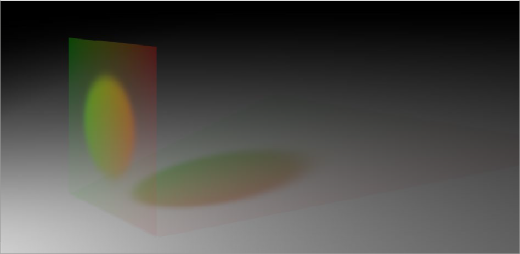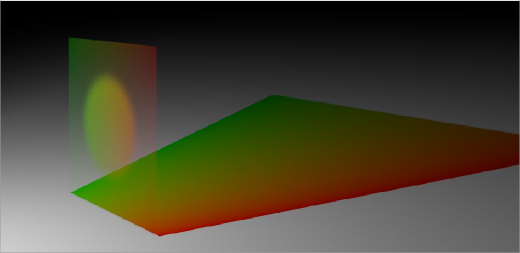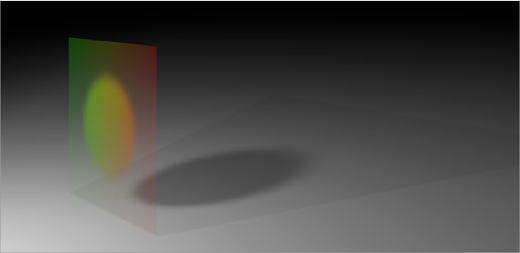
< Previous | Contents | Next >
Transmissive surfaces can be further limited using the Alpha and Color Detail control.
Attenuation
The transmittance color determines how much color is passed through the object. For an object to have fully transmissive shadows, the transmittance color must be set to to RGB = (1, 1, 1), which means 100% of green, blue, and red light passes through the object. Setting this color to RGB = (1, 0, 0) means that the material will transmit 100% of the red arriving at the surface but none of the green or blue light.
Alpha Detail

NOTE: The OpenGL renderer ignores alpha channels for shadow rendering, resulting in a shadow always being cast from the entire object. Only the software renderer supports alpha in the shadow maps.
NOTE: The OpenGL renderer ignores alpha channels for shadow rendering, resulting in a shadow always being cast from the entire object. Only the software renderer supports alpha in the shadow maps.
NOTE: The OpenGL renderer ignores alpha channels for shadow rendering, resulting in a shadow always being cast from the entire object. Only the software renderer supports alpha in the shadow maps.
When the Alpha Detail slider is set to 0, the non-zero portions of the alpha channel of the diffuse color are ignored and the opaque portions of the object casts a shadow. If it is set to 1, the alpha channel determines how dense the object casts a shadow.
![]()
The following examples for Alpha Detail and Color Detail cast a shadow using this image. It is a green-red gradient from left to right. The outside edges are transparent, and inside is a small semi- transparent circle.

Alpha Detail set to 1; the alpha channel determines the density of the shadow

Alpha Detail set to 0; a dense-colored shadow results
Color Detail

TIP: The OpenGL renderer will always cast a black shadow from the entire object, ignoring the color. Only the software renderer supports color in the shadow maps.
TIP: The OpenGL renderer will always cast a black shadow from the entire object, ignoring the color. Only the software renderer supports color in the shadow maps.
TIP: The OpenGL renderer will always cast a black shadow from the entire object, ignoring the color. Only the software renderer supports color in the shadow maps.
Color Detail is used to color the shadow with the object’s diffuse color. Increasing the Color Detail slider from 0 to 1 brings in more diffuse color and texture into the shadow.

![]()
Color Detail set to 0; no color is visible in the shadow.
Saturation will allow the diffuse color texture to be used to define the density of the shadow without affecting the color. This slider lets you blend between the full color and luminance only.
The transmittance of an object’s material plays an important role in determining the appearance of the shadow it casts. Normally, the transmittance behavior is defined in each object’s Materials tab as explained above. However, selecting Force All Materials Non-Transmissive in the Spotlight Inspector overrides this, causing the shadow map produced by the spotlight to ignore transmittance entirely.